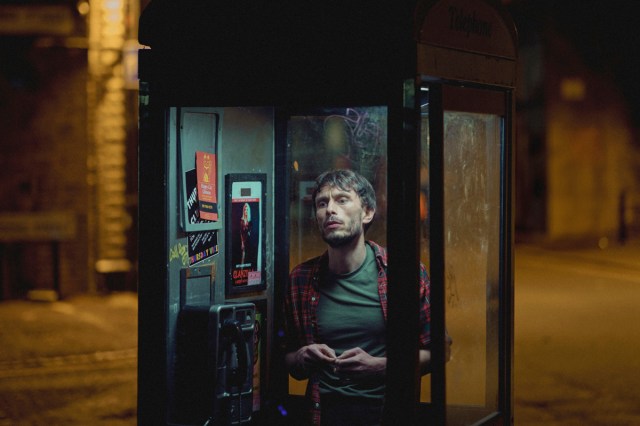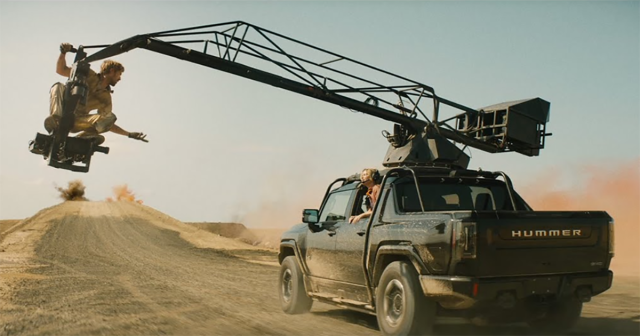
Much of the success of Netflix surprise hit “Baby Reindeer” can be credited to the deft editing required to pull off the adaptation of creator Richard Gadd’s autobiographical one-man show, which combines comedy and dark themes of trauma and abuse.
Editor Peter Oliver said, “It became quite a communal edit,” recalling the unusual involvement of creator/star Gadd, director Weronika Tofilska and the producers.
He discussed the process of cutting the limited series with “The Rough Cut” podcast’s Matt Feury, (transcripts of which you can also read on the Frame.io blog).
The editing also featured work from “[a] lovely guy named Benjamin Gerstein,” who stepped in to finish the series when Oliver had to take on another job. He said Gerstein “did a better job on the 360-degree shots. He put a bit more work into the details than I did.” Additionally, “The assistants went all the way through for continuity, which I think was a good idea.”
Oliver explained: “That 360-degree shot in the bar in Scotland was tough to link up. They did it brilliantly on set, but it’s complicated to join exactly the words you want to be linking up in that scene.”
“Oftentimes with comedy, you can get a few more laughs by cutting to reactions and then coming back, or how long you pause,” he said, “There’s a great scene at the end of episode two that is a very good encapsulation of what Baby Reindeer does.
“It’s where Donny is walking along the canal late at night. You have this jumpscare where Martha appears, blocking his way. Then you have the comedy of what she’s saying.”
He added, “Those scenes are a joy to work on because there’s so much going on.”
Oliver said, “I love having different takes to choose from. I love the nuances and reactions, and I love to keep going through the rushes and finding tiny things.”

Iterating to Get It Right
For Oliver, “There was a lot of doing and undoing things in the edit. It was very experimental, which was lovely. I just had to keep up to speed with a few people in the edit suite. You have to undo, then redo, and try things over and over. It takes a lot of concentration.”
His process also facilitated this because “I will duplicate a timeline and label it so that I know what order it’s in.
“I’ll do that for all of them so if anyone ever wants to look back on things, we can always find it. It takes up a lot more memory, but that’s the way that I prefer to do it. Then I can flip back to a previous version as soon as anyone requests it.”
Oliver noted that both Tofilska and Gadd were supportive of his repeated “tweaking,” saying Gadd “allowed for creativity in the edit suite,” although Oliver was careful to remain faithful to the script.
“I think the edit took longer because it was so personal to [Gadd],” Oliver explained. “I think he needed time to process.”
Feury commented, “The material is so powerful that I think it begs for more time and consideration in the cutting room. ”
Nonetheless, “Everything earned its place because the episodes are only 30 minutes long,” Oliver said. He joked, “Normally, I can be Edward Scissorhands, but not on this one.”
For Oliver, “the edit suite is a confidential place. It’s great to have discussions with Richard and Weronika about how we’re going to progress.
We got to talk about what Richard’s feelings are now and what his feelings were at the time. We asked, ‘Have we got it right? How can we tweak it? How can we feel more like that?’ And it all comes across.”
READ MORE: Unveiling the Baby Reindeer Editing Process (Frame.io)
Translating and Capturing Gadd’s POV
“The script is quite visual as you read it. I think it kind of describes images that come to your head, but then Richard had his memory and his experience,” Director of Photography Krzysztof Trojnar explained to Immersive Media. “So when we were, for example, scouting for locations, it was the balance between what Richard remembered and what would work for us as filmmakers.”
For Trojnar, David Fincher’s “Fight Club” provided a visual touchstone to create the right look for “Baby Reindeer’s” London and Edinburgh settings. He said, “I thought that the world of ‘Baby Reindeer’ needs to be gritty, and there’s nothing pretty about it.”
To achieve the right “narrative POV” for “Baby Reindeer,” Trojnar turned to “the Alexa Mini LF, and I guess the nonconventional lenses are the ones that I love, DNA also by Arri. You could tune the lens to kind of change its characteristics based on the film you want to create and they have this thing where the resolution falls apart going into the edges of the frame.

“And for us, it was all about keeping Donny in the middle of the frame and always sort of a lot of central compositions, and so that was something I wanted to use.”
The cinematographer also explained that the show’s lighting “was all pretty much straightforward until we get to episode four” in which Gadd’s character experiences abuse at the hands of a fellow comedian, Darrien.
He recalled, “We talked about how we want to shift this space in Darrien’s flat into this kind of something that during the day feels normal, but a little bit maybe uncomfortable or a little bit weird into this kind of nightmarish hole when the night comes and they start taking drugs and for that, we used a few different things.”
“Specifically, Trojnar said, “There’s this scene when Darrien is dancing, we would remove the ceiling and install these very long eight-foot-long tubes everywhere that would shift the color.
“So when we track him towards Donny, there’s this color shift and the light starts moving around the house a little bit. We did a few things with changing the sort of the dimensions of the flat. Subconsciously, it would feel just slightly bigger than you see in the final down sequence and the LSD sequence.”
READ MORE: ‘Baby Reindeer’ Cinematographer Krzysztof Trojnar Captures Darkness in London (Immersive Media)
Also in episode four, Peta Pixel’s Pesala Bandara writes: “[A]fter Darrien has drugged Donny, who is filmed laying out on the couch bathed by a golden light from the window above him. … The cinematographer says that he used outdoor street lighting as a spotlight on Donny during this devastating scene.”
Trojnar explained, “That was kind of the motivation from the drugs, where [Donny] sees that street light as a spotlight for himself.”
READ MORE: How ‘Baby Reindeer’ Cinematographer Made The Show Feel So Unsettling (Peta Pixel)

Why subscribe to The Angle?
Exclusive Insights: Get editorial roundups of the cutting-edge content that matters most.
Behind-the-Scenes Access: Peek behind the curtain with in-depth Q&As featuring industry experts and thought leaders.
Unparalleled Access: NAB Amplify is your digital hub for technology, trends, and insights unavailable anywhere else.
Join a community of professionals who are as passionate about the future of film, television, and digital storytelling as you are. Subscribe to The Angle today!


